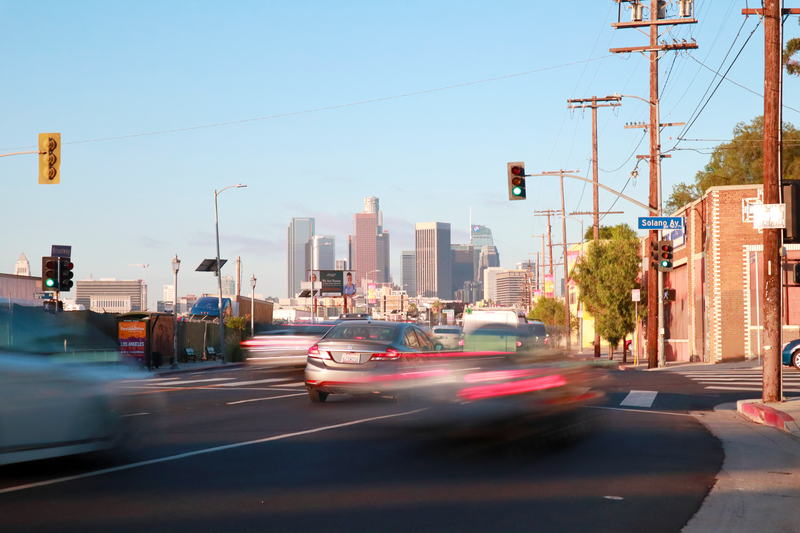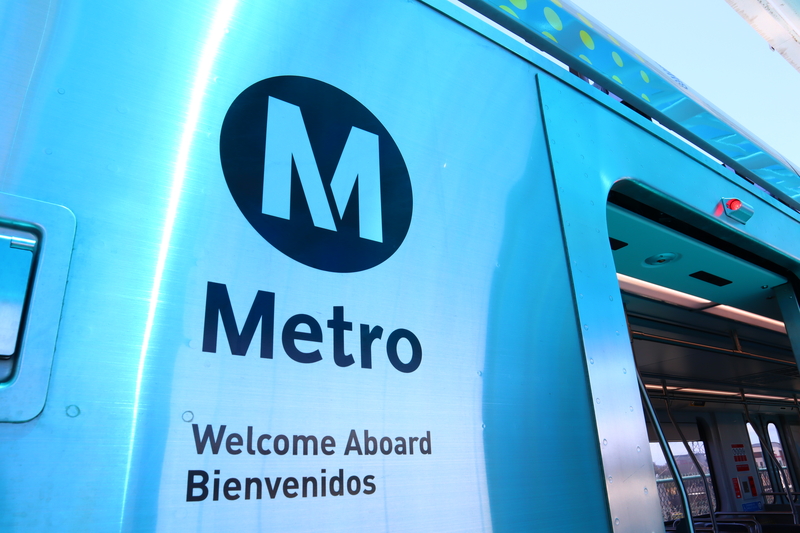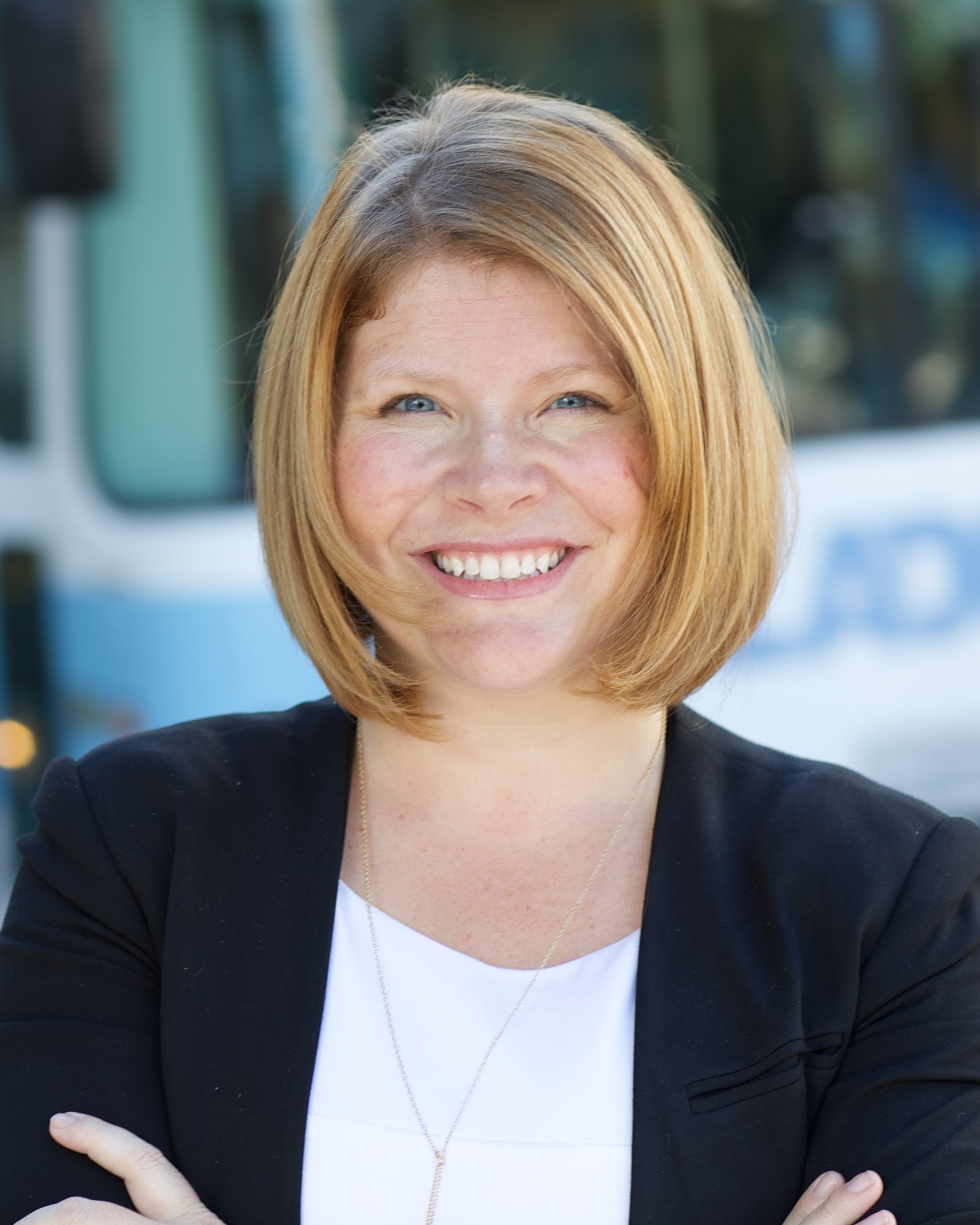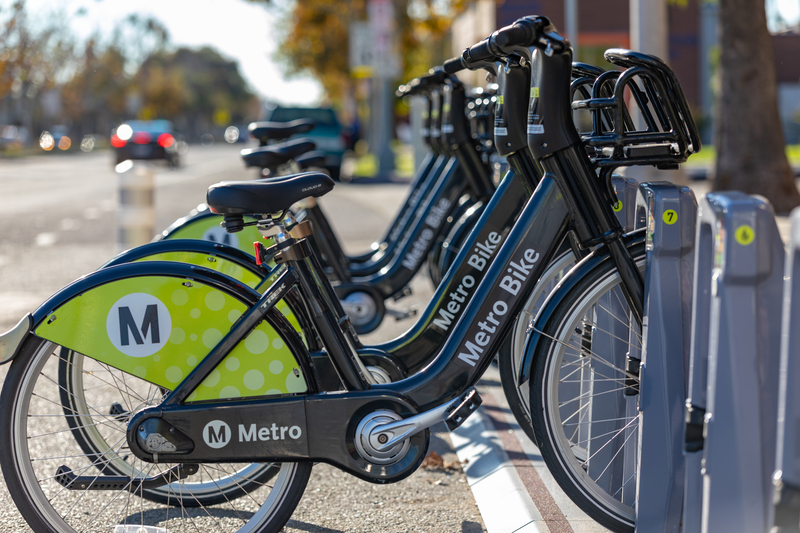
Seleta Reynolds has a new job. After several years as general manager of Los Angeles Department of Transportation (LADoT) she has just stepped over to the other side of the fence in the City of Angels to become chief innovation officer at LA Metro.
Talking to ITS International shortly after the announcement was made, Reynolds says: “I love my job in LADoT - it is my dream job. It will always have been my dream job, an incredible opportunity to make decisions and push really hard and take on battles that you decide are worth fighting. That's just very precious.”
However, she says, the chance to “work with a leader that I really admire” (Metro CEO Stephanie Wiggins) and the fact that the 2028 Olympic and Paralympic Games are coming to LA, plus the ability still to work on initiatives about which she is passionate, such as mobility wallets and congestion pricing, meant that she made the leap.
Reynolds will oversee Metro’s Innovation Office, with a focus on preparing for the Olympics, updating Metro’s strategic plan and implementing new pilot programmes.
“It was an opportunity that was just too good to pass up because I have always felt strongly that LADoT is a fantastic place to test out and pilot new ideas - but Metro is the agency that can take those things to scale across the county,” Reynolds explains.
Racial equality
The universal basic mobility pilot in South LA is one of these, with some residents given $150 a month for a year to spend on transport services. This is about much more than transportation, she says: “I'm very much talking about an anti-poverty measure, I'm talking about climate action, I'm talking about racial equity, I’m talking about public health. Transportation is really the reason why people cannot get to jobs, education, opportunity, and the system that we've created does not deliver equal dividends to everyone.”
If you have the money to buy and run a car, then “the mobility system works okay for you”. “But if you can't afford a car, don't have access to credit, it leaves you behind,” she continues. “When you look at the way that we've allocated funding for public transit, and allocated road space between cars and people who aren't travelling by car, it's not equitable. And when you look a little closer at the neighbourhood where this impact is felt most deeply, you start to see other inequities at play.”

She cites research which found you could reach 12 times as many jobs in an hour by car in LA County as you could in an hour by transit. “These huge inequities in the transportation system are playing out as inequities in other places, and especially in Los Angeles, where we have crushing homelessness and people falling into poverty and having their economic mobility stripped away on top of the public health crisis that we have on our hands, with traffic crashes, and poor air quality,” she says. “It’s clear that transportation really needs to change what we measure and how we measure it - and how we how we measure success.”
In theory universal basic mobility means that wherever you live in the city, and however much you earn, “you have the same access to opportunity as anybody else”. This means filling in “transportation deserts” with services as well as giving people a monthly budget to spend on them.
As well as physical infrastructure – the South LA pilot includes redesigning streets to include transit priority and bike lanes “to rebalance the playing field as far as the actual physical space of the streets” – there are services, like an electric car-sharing programme “so that people can actually get access to an electric vehicle [EV] on demand when they need it, to serve a variety of trips”.
There is also digital infrastructure – specifically, the mobility wallet through which people access their $150 a month which will have a phased roll-out between autumn 2022 and the first quarter of 2023. There is also a community infrastructure element: training, so that people can learn how to repair EVs and e-bikes in preparation for jobs in a green economy. A community advisory board is on hand to hold the authorities accountable and make sure that the services created are actually useful and do not unintentionally create barriers to access.
“Our challenge always in the bureaucratic professional layer of the city is that we may not have the same sort of expertise that comes from lived experience,” Reynolds admits. “The people who are actually in the community are the experts and [we want] to really access their expertise in a way that is respectful and empowering to them.”
Equity of access
How, then, is equity of access to be achieved? “The biggest challenge for many of us who've been working in transportation for a long time is that we've been so focused on the fight to correct the status quo, the over-reliance on driving,” she says. This means elements such as protected bike lanes, Vision Zero interventions and transit-only lanes have been the focus in progressive transportation in American cities for the last 15 years – “but we haven't yet really been clear about what the right role for the car really is”.
That being the case, she thinks the provision of widely-available, affordable and accessible, reliable and safe EVs and e-bikes for community use, along with the mobility wallet, “are the two most important things that we're going to do”.
Some observers might see a contradiction in making cars part of the solution, but Reynolds is adamant. “The fact remains that land use in LA, like most American cities, is a post-World War Two separation of uses that's created a situation where surface transit is going to continue to struggle to connect people to where they need to go in a timely way,” she says. “So while the transit system catches up, we have got to make sure that we give people access to cars - without getting ourselves into a situation where people must own cars in order to be successful. That's the trickiest part and I think that's the part that I'm most interested in.”

A change in mindset is required. Although outsiders might think of Los Angeles as the archetypal temple to the automobile, Reynolds is not convinced that it is so very different from many other urban areas. “Actually LA is not really an outlier when it comes to US cities; you think about Houston, Dallas, Cincinnati, any of those cities that are not ‘legacy rail’ cities like Washington, DC or New York, or maybe even San Francisco,” she points out.
In fact, American cities were built around walking and cable cars, she says: “It's the reason why we still have a lot of these very wide streets that we're now recovering from our car dependency hangover and really rethinking what the space allocation is on the streets.”
This history is important, not least because it proves LA was not always so car-dependent; but “there are a lot of invisible subsidies for driving that actually create an over-reliance on cars”.
Transport change
Congestion pricing, and making transit “either free or very affordable”, will be crucial in altering the status quo.
“Those kinds of things are going to be essential to changing the way that people get around for good,” Reynolds says. “We have a unique window in the arrival of the 2028 Olympic Games that gives us a really interesting moment to do things that people might not normally be willing to allow us to do, like time-restricted deliveries freight movement, congestion pricing, things like a network of transit-only lanes throughout the city, that might allow people to get a glimpse of a different way of getting around and a different way of life. But the first step to recovery is getting out of the sense of denial that somehow people love driving and there's no way to change the city. The fact is that one of the only constants in cities and transportation is change. And so we have to keep looking for the right levers.”
Residents want this, she insists, citing the way that voters have backed a permanent one cent sales tax, to be invested in transportation: “Again and again at the ballot box, people are voting for the vision of Los Angeles that I think we can achieve. We need to think about how do we make the consequences of people's transportation choices more transparent to them? How do we begin to level the playing field between driving - which is a heavily subsidised activity - and taking transit, which we haven't invested in and subsidised in the same way. Congestion pricing offers an opportunity to do that, but we have to do it in a way that is incredibly mindful of inherent inequities that people struggle with currently and that doesn't exacerbate those.”
As she switches roles, it is perhaps a good time to take stock of her career to date. “One of the biggest lessons that I've learned in in transportation is that I have a lot to learn - and still do, and will forever, because transportation at its root is really about human behaviour, and I'll be a student of that my whole life,” she says. “It’s really easy to get tricked into thinking - particularly for folks who are technical or who are really intelligent or who are in leadership positions - that the key to my success is: ‘I have a vision and an idea and I'm just going to create work plans and hold people accountable and I'm going to push them and that's how we're going to succeed’.”

Reynolds laughs: “I have just never found that to work. Instead what you have to do is shut your mouth, ask this question, and then listen - and really listen to what people love about the job that they have and what the people who work for you really care about; what they think is inspiring, what they want to spend their very precious time on.”
And then whether or not that fits perfectly with your vision, you have your path. “You have to make that the cornerstone of what you're trying to accomplish and you will find success because you will have shaped a vision around the things that people already want to do,” Reynolds concludes.
“As a leader, your job is to set a vision, listen to your people, and then get out of their way and make sure nobody else gets in their way either.”
Twenty-eight by ’28
LA Metro is behind the Twenty-Eight by ’28 initiative, to complete 28 major road, transit and bicycle projects before the 2028 Summer Olympics and Paralympics in the Los Angeles area: 17 of these are already scheduled to be complete by 2028, while the other 11 will require new or accelerated funding.
“That list is incredibly ambitious and rightfully so,” insists LA Metro chief innovation officer Seleta Reynolds. “If there's any moment to shoot for the moon, it's when you have the leverage of the eyes of the world being on you, and people wanting to show off Los Angeles as truly a world city.”
She is not drawn on milestones, but points out: “Each one of the projects on that list is going to get much, much farther than it would have otherwise. We should think about what would have happened to some of those projects on the list, absent this kind of motivation that people will have to break down the silos, to really question some of the rules that we have that slow projects down, and to work together as a region.”
She is enthused: “If Twenty-Eight by ‘28 brings us closer together and focuses our attention all in the same direction I think it will have been a tremendous success.”
How do you motivate people?
Seleta Reynolds worked for years as general manager of LADoT before becoming chief innovation officer of LA Metro. As she begins her new role, the question of workplace culture is high on the agenda.
“How can we begin to represent the kind of culture that we want people to feel when they come to work every day and they have that choice at the end of the day to give the extra 15 minutes or to clock out early and go home?" she asks.
First off, make people feel that their job has meaning. “So it can't just be about processing an invoice for a grant if you are an accountant at LADoT - you have to be seen and recognised and lifted up as a really critical part of this department that is trying to save lives, that's trying to make sure that a student who leaves their house in the morning to walk to school makes it home to their family at the end of the day - because you're the accountant who's working on the Safe Routes to School grants.”

Similarly, people must feel they’re doing more than just keeping traffic lights running or writing parking tickets or directing traffic. “You have to make sure they know that by directing traffic at a Dodgers game or by closing streets for the LA Marathon, they're actually making it so that somebody who wants to run the marathon in memory of somebody they lost to cancer gets to fulfil that dream and make that tribute,” she says. “That's why we're closing that street – not just because the organisers of the LA Marathon are paying us to do so. So first you have to connect. You have to have that vision, it has to be clear and easy to understand, and everybody in the organisation has to understand the bigger ‘why’.”
Crucially, as a leader, you must always give credit – and take blame. “You have to recognise people over and over again and shine a light on the incredible work that they're doing,” she says - especially when they, for the most part, may get quite negative feedback from the public in general as residents are unhappy with changes to streets which they think have gone too far – or not far enough.
“They need to know that at the very top of the organisation there's somebody who really sees their good work and who appreciates it,” Reynolds insists. “And that when they make a mistake or when they try something new and it doesn't work out, that they're not going to get hung out to dry, that the leader will take whatever fallout comes from that and support them to keep on taking risks and keep on trying new things.”
LA Metro: strategic plan
Seleta Reynolds’ first assignment in her new role is to update LA Metro’s strategic plan, which was put in place during the Covid-19 pandemic, “when we were in a completely different world”. “I'm a real believer in the power of those plans,” she says. They reflect back the vision of the people inside the agency, and bring forward the voices of the people who work at Metro, Reynolds thinks: “They look at all of the different initiatives and goals and policies and hopes and dreams of the board and the region and really synthesise them and prioritise them and create a very clear playbook for folks.”
Plans look at the things that won't be accomplished unless they are included and given focus – and they are also the place to establish core values. “What is the culture that you're trying to create, that will implement the changes on the street?” she asks. “Because no leader is going to be able to go out and implement that all by themselves; a vision completely relies on empowering folks and lifting them up and having a great culture inside the agency.”
Reynolds will be heavily involved in the roll-out of South LA’s universal basic mobility pilot and mobility wallet later this year, and in the run-up to Los Angeles hosting the 2028 Summer Olympics and Paralympics. “That work is really just beginning in earnest,” she says.
“Without delay, we need to, as a region, be really clear about what the legacy projects are that we want to start working on now and that we want to leave behind - and that includes another one of the big projects in this portfolio, which is congestion pricing and trying to finally get us to a place where we can implement something.”





